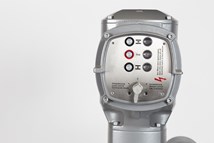Westinghouse Awarded Contract to Develop Microreactors for NASA-DOE
The contract will enable the company to continue development of a space microreactor design through the Fission Surface Power (FSP) project.

Westinghouse Electric Company announced today that NASA, working with the U.S. Department of Energy (DOE), has selected Westinghouse to continue development of a space microreactor design through the Fission Surface Power (FSP) project.
The FSP project is focused on developing concept designs for small, electricity-generating nuclear fission reactors that could provide astronauts a reliable power supply for use on the moon and beyond. This contract, awarded by Idaho National Laboratory (INL), will build on the successful design work Westinghouse completed during Phase 1 to optimize its contributions to the design of FSP systems and their configuration, and begin testing of critical technology elements. The continued progress under the FSP project can enable NASA’s goal of a lunar demonstration within the next decade.
“This award reflects our close collaboration with NASA and the progress we’ve made on the FSP program that will enable a strategic capability for the Artemis mission,” said said Richard Rademacher, president, Westinghouse Government Services. “We look forward to testing and demonstrating our proprietary microreactor technology in the coming years under this important NASA initiative.”
NASA’s FSP program expands on the efforts of the agency’s Kilopower project to develop affordable fission nuclear power technologies for long-duration stays on planetary surfaces. Currently, NASA is working with DOE to design a fission power system that would provide up to 40 kilowatts of power, enough to continuously run 30 households for 10 years. A future lunar demonstration will pave the way for sustainable operations and base camps on the moon and Mars.
Westinghouse is leveraging its eVinci microreactor technology to develop a resilient and mass-efficient nuclear electric power and propulsion system for satellite, spacecraft and planetary surface power applications. Building on decades of industry-leading Westinghouse innovation to bring carbon-free, safe and scalable energy wherever it is needed for a variety of applications, the eVinci microreactor generates reliable electricity and heating for remote communities, universities, mining operations, industrial centers, data centers, defense facilities and soon the lunar surface and beyond. These resilient microreactors have very few moving parts, providing versatility for mission types with the reduction of failure points, simple operation and increased reliability for the harsh environment of space.
For more information, visit www.westinghousenuclear.com.
RELATED CONTENT
-
An Overview of Butterfly Valves
A key advantage of selecting a butterfly valve is the reduction of space and weight to a system compared with other options such as ball, check, globe or gate valves.
-
Selecting Non-metal Materials for Valve Components and Coatings
Non-metallic materials are commonly used for valve components, and the selection of non-metallic materials for valve design and for application-specific conditions is critical to ensuring product reliability.
-
The Fundamentals of Gate Valves
The venerable gate valve remains a primary choice for many service applications.







 Unloading large gate valve.jpg;maxWidth=214)


